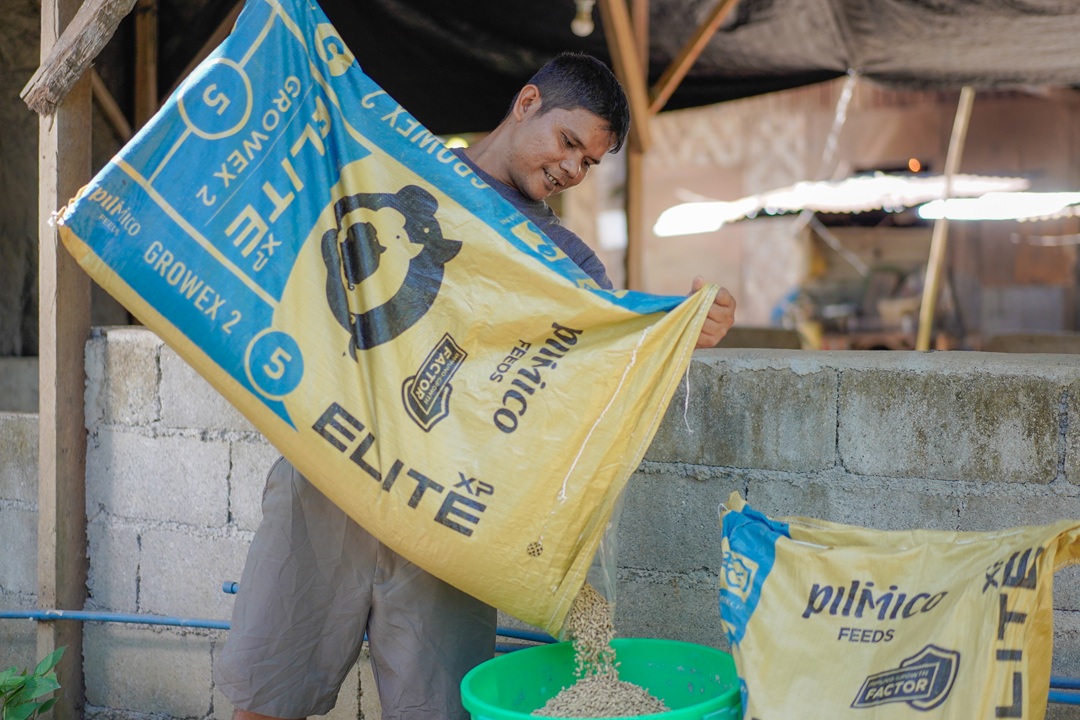Effective feeding is crucial for animal welfare and financial success in farming. For both swine and poultry, a well-managed feeding program promotes growth, minimizes waste, and helps prevent common health issues. More than just a routine, feeding is a vital component of animal care.
Here are four key principles to help you feed like a pro:
1. Match the Feed to the Animal’s Stage
Young animals have underdeveloped digestive systems, making them less capable of handling heavy, fibrous ingredients. That’s why feeds provided during the early stages are made to be more nutrient-dense and easier to digest. Some raisers try to cut costs by skipping starter or creep feeds and jumping straight to grower diets meant for older animals. While this may seem economical at first, it often leads to poor digestion, stunted growth, and higher veterinary costs in the long run.
As animals grow, they begin to consume more feed by volume, so their diets are gradually adjusted to contain less concentrated nutrients while still meeting their increasing daily needs. Feeding just the right amount—not too little and not too much—is key. Underfeeding limits growth; overfeeding wastes nutrients and increases the risk of pollution, since excess nutrients are simply excreted.
A well-structured feeding program ensures that animals get exactly what they need at each stage—not more, not less.
2. Keep Feeds Fresh and Clean
Cleanliness affects not just feed quality, but also animal health and performance. Spoiled or contaminated feed can cause digestive upsets or reduce feed intake, especially in young animals.
Tips for maintaining feed quality:
• Proper Storage: Store feeds in a dry, cool, and well-ventilated area away from sunlight and moisture.
• Container Hygiene: Use clean, covered containers or automatic feeders to protect feed from dust, pests, and moisture.
• Frequent Feeding for Young Animals: Feed younger animals more frequently in smaller amounts to avoid spoilage.
• Clean Water Access: Ensure water is always clean and accessible—nipple drinkers and regularly cleaned troughs help prevent contamination.
• Pest Control: Maintain a pest- and rodent-free environment around your feed storage and pens.
Remember: Good feed is only effective if it stays clean from storage to consumption.
3. Prevent Spillage and Wastage
Feed is one of the highest input costs in any farm operation, so letting it go to waste means losing money.
To avoid this:
• Choose the right feeder type for the age and size of your animals.
• Adjust feeder openings properly to control flow and avoid overfilling.
• Avoid floor feeding, which leads to both spillage and contamination.
• Clean feeders regularly and ensure trough surfaces are smooth to prevent buildup or spoilage.
Even small improvements in how feed is offered can make a big difference in overall efficiency.
4. Observe Feed Intake Closely
Changes in feed consumption can be one of the first signs of stress, illness, or poor feed quality. A sudden drop in intake may mean that the feed has spoiled, the animal is feeling unwell, or that environmental conditions—such as heat—are affecting appetite.
Try to feed during the cooler parts of the day to maintain intake, especially in hot conditions. And if animals consistently eat less than expected, consult your assigned Pilmico Animal Production Specialist before attempting any treatment. Misuse of antibiotics or additives can do more harm than good if the root cause isn’t addressed.
Monitoring feed intake is not just about consumption, it’s about staying ahead of potential issues.
Feeding with care, combined with careful and attentive feeding practices, is crucial for raising healthier animals and maximizing your feed investment while minimizing waste. A good feed is only as effective as how well it’s managed—so feed smarter, farm stronger.
Frequently Asked Questions
1. What is smart feeding in livestock farming?
Smart feeding means giving animals the right type and amount of feed at the right time to meet their nutritional needs. It helps improve growth, reduce waste, and support animal health efficiently.
2. Why is it important to match feed to the animal’s stage?
Animals have different nutritional needs at each stage of growth. Feeding stage-specific diets improves digestion, supports proper development, and prevents under- or overfeeding that could lead to poor performance or nutrient waste.
3. How do I keep animal feeds clean and fresh?
Store feed in dry, rodent-free areas and use covered bins or feeders. Clean feeders regularly, provide fresh water through closed systems, and maintain pest control to keep feed safe and uncontaminated.
4. What can I do to reduce feed wastage on the farm?
Use well-designed feeders suited to your animals, avoid overfilling, and never feed directly on the floor. Regular maintenance and proper feeder setup help reduce spillage and spoilage.
5. What does a sudden drop in feed intake mean?
A decrease in feed intake may signal stress, illness, spoiled feed, or heat-related issues. It’s important to monitor intake daily and consult a specialist before making changes or using treatments.

